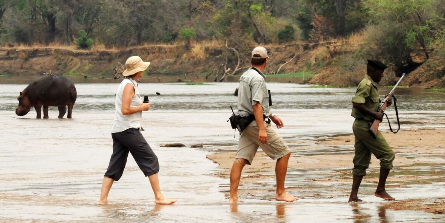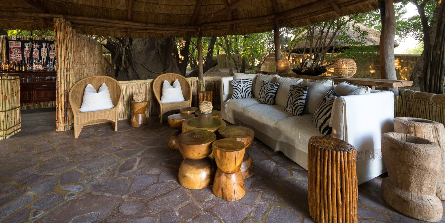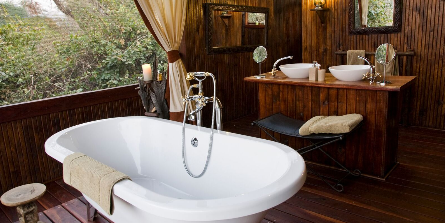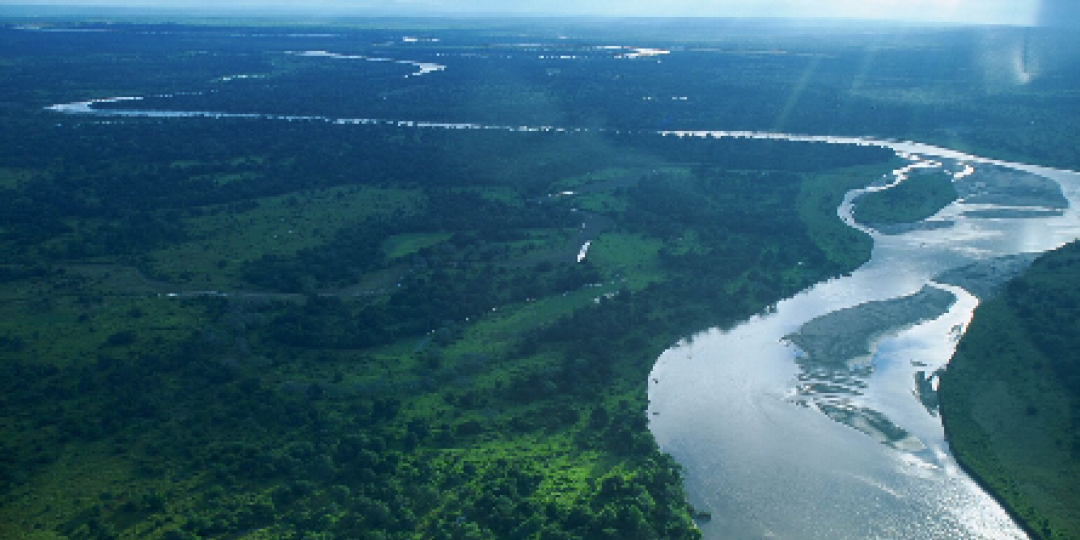Industry players active in Zambia believe that marketing efforts by the country’s tourism stakeholders are paying off in enhanced consultant knowledge.
Comments aha’s Hans-Peter Merensky: “The Zambia Tourism Agency (ZTA) and the Livingstone Tourism Association (LTA) are attending the necessary, popular global trade shows and are improving Zambia’s global footprint and presence. That, in conjunction with the renewed and energised efforts of the large hospitality groups such as Tourvest and aha Hotels & Lodges, Radisson, Explorer Club and the Minor Group, is contributing to the travel trade knowledge.”

Photo credit: The Bushcamp Company
Classic Portfolio hosts hundreds of agents at the camps it promotes on an annual basis, says Katie Dalrymple Hamilton, Head of International Sales. The issue, she says, is a lack of awareness of the range of experiences available on a Zambian safari, which includes 4x4 drives, walks, boating and canoeing and cycling.
Zambia, she says, should be a household name for those seeking immersive and diverse safari experiences, and the trade needs to build confidence in selling the destination to the uninformed public. “Specialist safari companies and individuals who have the passion for Zambia do this very well and have a fabulous niche in the market with many guests returning.”
According to Dalrymple Hamilton, a new consortium dedicated to raising awareness of Zambia among the public has been formed. The Zambian Marketing Group is a collaboration of leading tourism businesses, and will be running an extensive consumer PR campaign starting in summer 2017, to educate and enthuse travellers on the country’s many attractions.
Nik Lloyd-Roberts, Federal Airways’ Commercial Manager, has exhibited at all the major travel trade shows this year, and found the general Zambia product knowledge to be at an acceptable standard. “I believe that if getting to the destination was not as prohibitively expensive as it currently is, product knowledge of the lesser-known camps would be more in-depth.”
From an aviation perspective, Zambia is highly costly, says Lloyd-Roberts, with rates for fuel, handling and clearances being some of the highest in the SADC region.
Tourvest DMC’s Wanita Bezuidenhout, agrees that air travel pushes the safari cost into the relatively expensive bracket. While acknowledging that Zambia has accommodation to suit every comfort level, the remoteness of the country’s wildlife parks makes access by air the best option. Nevertheless, “Zambia has always seen good support from the UK and Australia and we are now seeing a lot of interest from the US and Europe,” she remarks.
Merensky points out that Zambia has mandated legislative costs that result in higher selling prices, for example a 16% VAT rate; a service charge of 10% on accommodation, food and beverage and conferencing; a tourism levy of 1.5% and a skills levy of 0.5%.
“As far as possible, industry attempts to contain and ‘absorb’ these costs,” he observes, “but there is a very obvious distinction in pricing as a result of these cost burdens.” As a result, Livingstone, an activity-based destination, is uncompetitive against Victoria Falls in Zimbabwe, he says, and also bears the brunt of higher fuel and operating costs.”
Strong disagreement comes from Dalrymple Hamilton, who says: “With safari comes responsibility to nurture the environment and therefore park fees and community levies all add up on a nightly basis. However, as prices for safaris go, I do not believe that Zambia is expensive when you see what you get and if you are a little clever.”

Photo credits: Kuyenda Bushcamp in Luangwa National Park
She offers the Bushcamp Company in the South Luangwa National Park as an example. “If you look at their ‘shoulder seasons’ in June and October which are traditionally peak season months, rates for 2018 are only US$565pppn. These camps are remote so there is no sharing of the incredible wildlife sightings. They offer only three or four chic and comfortable chalets and a wonderful combination of walking and 4x4 safaris for an all-round understanding of the ecosystems. Always look at the inclusions and the variety of activities,” she says.

Photo credit: Chiawa Camp in Zambia
At the opposite end of the scale, Chiawa Camp, she says, is arguably one of the most expensive camps in Zambia at between US$915 and US$1,260pppn. Yet 4x4, walking, canoeing, boating and fishing are all included in the rate as well as a swimming pool, bush gym, indoor and outdoor showers and baths. “All very much on the same level as a high-end Botswana product, and yet for a far smaller price tag,” she concludes.






















